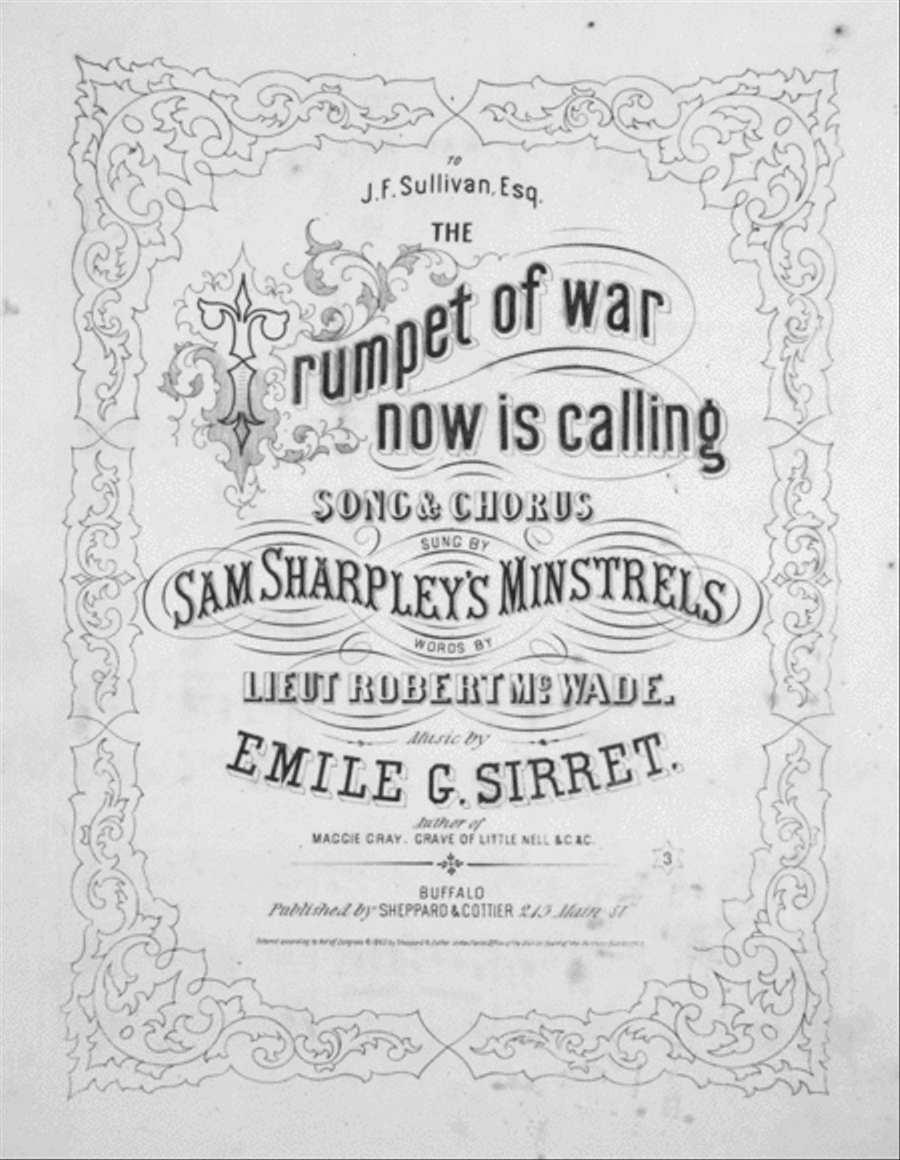Piano and voice - Digital Download SKU: LV.23238 Composed by Emile G. Sirret. Couples, Love, Farewells, Sadness, Soldiers, Civil War--Union, Patriotism. Lester S. Levy Collection. 5 pages. Published by Johns Hopkins University Sheridan Libraries (LV.23238). The Trumpet of War Now is Calling. Song & Chorus. Words by Lieut. Robert McWade. Music by Emile G. Sirret. Published 1863 by Sheppard & Cottier, 215 Main St. in Buffalo. Composition of strophic with chorus with piano and voice instrumentation. Subject headings for this piece include Couples, Love, Farewells, Sadness, Soldiers, Civil War--Union, Patriotism. First line reads My own dearest love I must leave thee I must march to the land far away.. About The Lester S. Levy CollectionThe Lester S. Levy Collection of Sheet Music consists of over 29,000 pieces of American popular music. Donated to Johns Hopkins University Sheridan Libraries, the collection's strength is its thorough documentation of nineteenth-century American through popular music. This sheet music has been provided by Project Gado, a San Francisco Bay Area startup whose mission is to digitize and share the world's visual history.WARNING: These titles are provided as historical documents. Language and concepts within reflect the opinions and values of the time and may be offensive to some.
